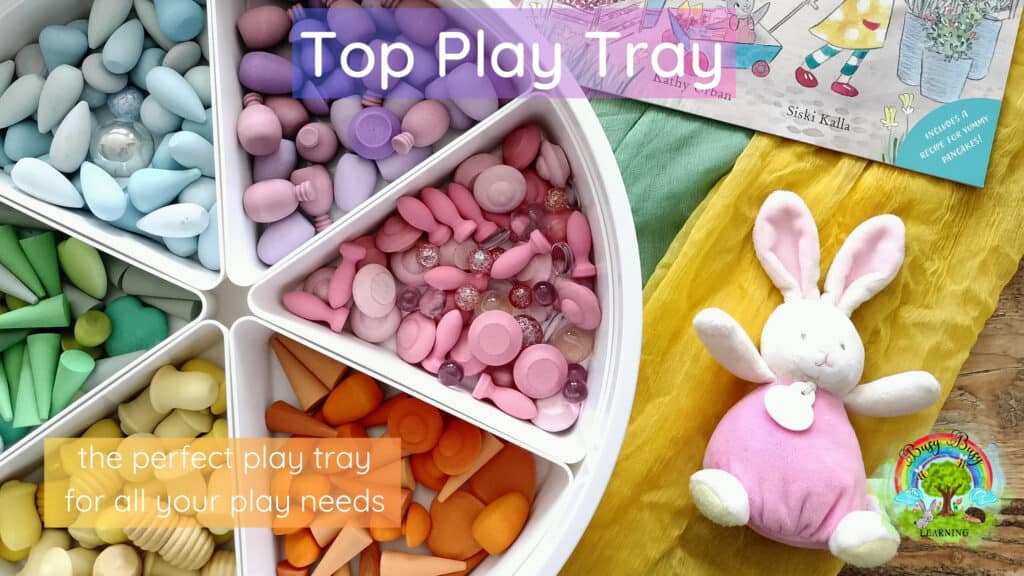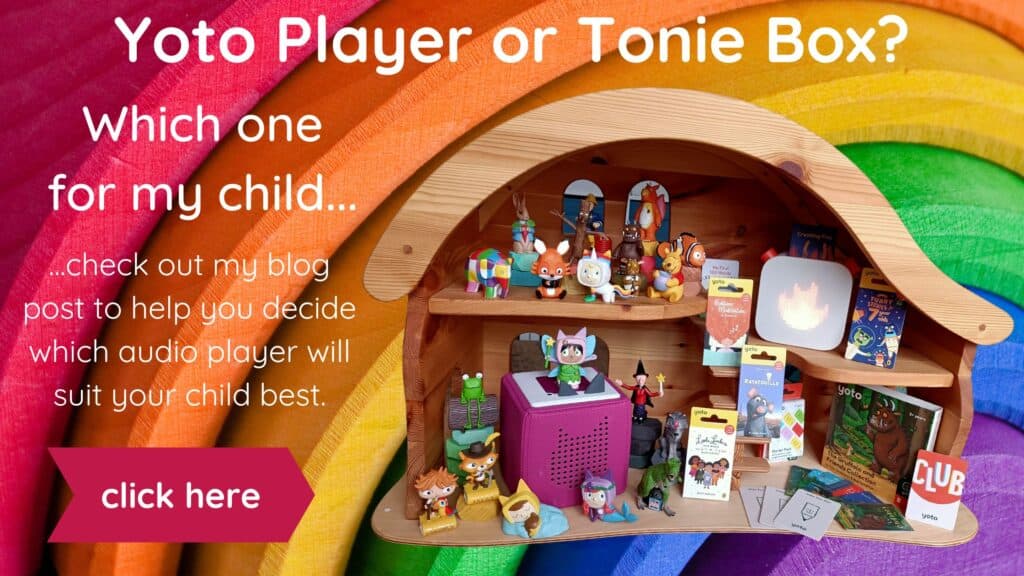Polar Play
It’s been a while since I’ve shared a small world play post on the website. It’s one of Floss, our daughter’s favourite types of play. Small world play is such an incredible form of play that develops so many essential skills for children including fine motor, language and cooperation skills to mention a few.
It’s also a wonderful way of exploring both familiar and unfamiliar environments. In this post we are exploring a polar small world play scene. You’ll get ideas of on how you can explore many different learning opportunities through this type of play.

This website contains affiliate links. As an affiliate I may earn money from qualifying purchases. Thank you if you do use one of my links – it helps keep my website going. Please see affiliate link and disclaimer page for more information.
Polar Scenery and Characters
Thinking about the clear up before you start is always helpful. As you can see in the picture below there is a tray inside a tray table. This helps to minimise the amount of mess you need to clean up!

Firstly, you do not need all the toys/ resources in the image above. Children are happy to play with sticks and mud don’t forget!
Play Tray – Inspire My Play Trays
I frequently get asked about the trays that I use. My circular one I picked up from TKMaxx who often have lovely trays. However, I’ve recently (2023) fallen in love with the wonderful play tray below that I think is ideal for so many types of play.

It’s called Inspire My Play Tray. You can find the tray on Amazon here or through the Inspire My Play website here. It comes with a deep tray that has a secure lid but can also double as a shallow tray with 6 individual little dividers that fit snuggly into the trays. It cleans up really well and is ideal for all sorts of play including messy play and water play.
Polar Small World Play Resources
Previously, I was an early years and primary teacher and have amassed lots of resources over the years. I’ll list off what resources I’ve used, but also give you ideas of other things you could do/ use.
- Polar Animals from Eric and Albert – use any polar animals you have. This set has a good range and our realistic and perfect for Montessori play. Another idea is to draw and cut out your own animals for your play scene. Children love joining in or if old enough doing this themselves.
- White pebbles are from Imagistones (they are no longer trading but I’ve found similar here) – cut out your own pebbles from card or paper, stones from the garden or screwed up pieces of white paper.
- Blue Pebbles are part of a set of Rainbow Pebbles – again make your own of these or use jar lids and fill with a little water for an extra sensory experience.
- SumBlox numbers are brilliant as a block build and maths resource, again use any numerals you have.
- Adding items to little bowls or trays is a very inviting way to get children to explore what they have. They often form integral parts of the play too helping children to sort, transport and organise their play.
- Soft bowls are a lovely, tactile resource and are great for small world play. You can have a go at wet felting your own of these. Marie has the most beautiful roving if you want to make your own – here is her Etsy shop. This is where I buy my yarn from and I use them to make play mats and fairies too – she ships worldwide.
- Scarves/ fabric are a brilliant way to set a scene. Here’s a blue scarf and blue fabric. Charity shops are brilliant places to pick up these too.

What Do You Do While They Use The Polar Play Small World?
You don’t NEED to do anything. Often it is lovely just to observe your child’s play. Some children may like to have some modelling of how to play with the scene. If this is the case then play alongside your child narrating what you do.

Narrating their play is such a great way to develop language skills and introduce new vocabulary as well. Below are some ideas of questions/ prompts you can use and learning opportunities you can encourage if age/ development appropriate.

Polar Play Prompts and Learning Ideas
- Do you think it is hot or cold where the polar bears live? Why do you think that?
- What might polar bears eat?
- Do polar bears and penguins live in the same place? Really useful to have an atlas or a globe to help children understand where in the world things are compared to them.
- Use the free flashcards below to make a Venn diagram for animals you would find in the North, those in the South and those found in both.
- Can you find the animals that starts with a…. (eg. f for fish, s for seal)
- How many animals are there altogether?
- Use mathematical language to narrate their play. You have an empty bowl, that bowl is full, that bowl is almost empty.
- Each seal wants two fish. How many fish would two seals need? How many would four seals need?
- Often you will see children coming up with their own challenges. Floss used the wooden blocks to make a repeating pattern. What colour would come next?

Free Polar Play Language Flash Cards
Polar Animals
Polar animals flash cards. Can be used in so many ways, introducing new vocabulary, print two copies and make into Montessori three part cards. Use to help children sort between North and South poles.

Brilliant Polar Books to Share
Here are a selection of some of our favourite polar books that you can find at my Bookshop site.

Our Latest Polar Play Set Up
Recently, we were given some gorgeously, soft play sand from Rainbow Eco Play to try. It’s one of their range of ‘mixies’ sands that are a blend of colours perfect for small world play. Their Polar blend is blue and white and super tactile. They have a range of eight different ones to choose from.

We used it to set up some North and South Pole play scenes for our polar bears and penguins. What’s great about the resources we have is that they can be used for so many different purposes.

Black’s Toys are a small family business that make beautiful scenery play pieces like The Glacier below. Grapat Mandala toys such as the raindrops and small coins below have endless possibilities and I love the plain white stones in small world play set ups.

Rainbow Eco Play Polar Play Sand
The Rainbow Eco Play sand made a wonderful play scene for our polar bears and penguins. Using a sensory material as a base for small world play is the perfect way to help transport children to another world and spark their imagination. We loved Rainbow Eco Play’s sand and the great thing is it is eco friendly and can be reused over and over again.

Sand is also a brilliant way to explore other learning opportunities such as letter and number formation practise. Having different containers alongside small world play invitations allow children to explore concepts of capacity such as empty, full, half full etc. while ‘feeding the polar bears’. Pouring itself utilises lots of developing skills for young children.


Change It Up!
Want to make your playscape last longer? Use ice in a washing up bowl or tray with your animals. Our freezer needs regular de-icing. When I do it we have a tray with polar animals and shovel the ice onto the tray. I get to de-ice the freezer, while the little one plays. Perfect teamwork!

If you’d like to explore more small world play ideas you can find more posts here. Do also check out this great blog post, packed full of ideas, from Livin Your Best Mom here.
